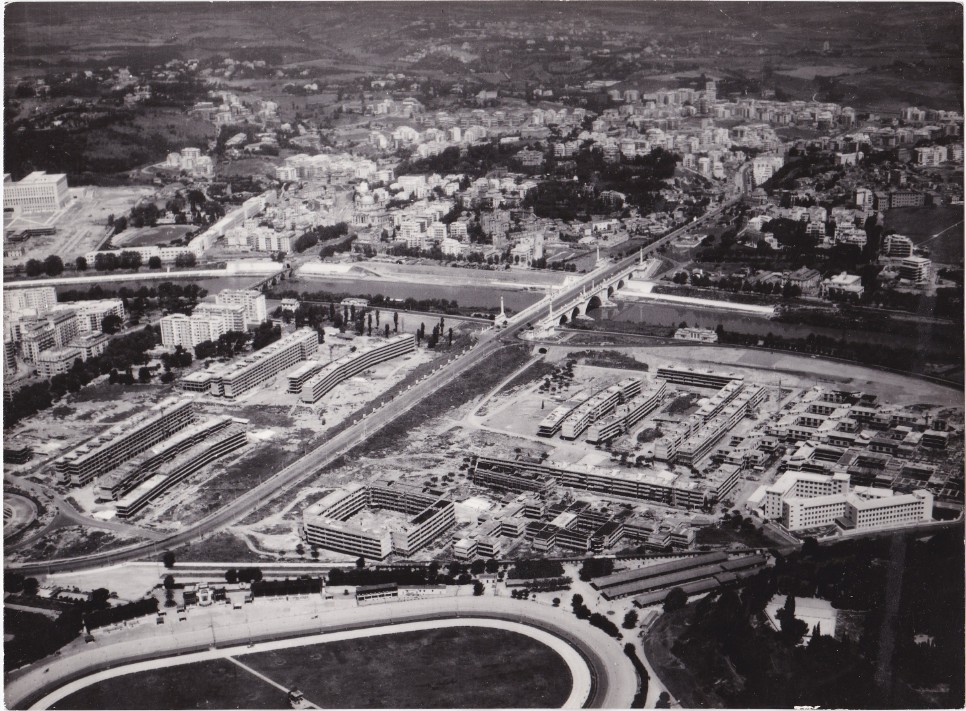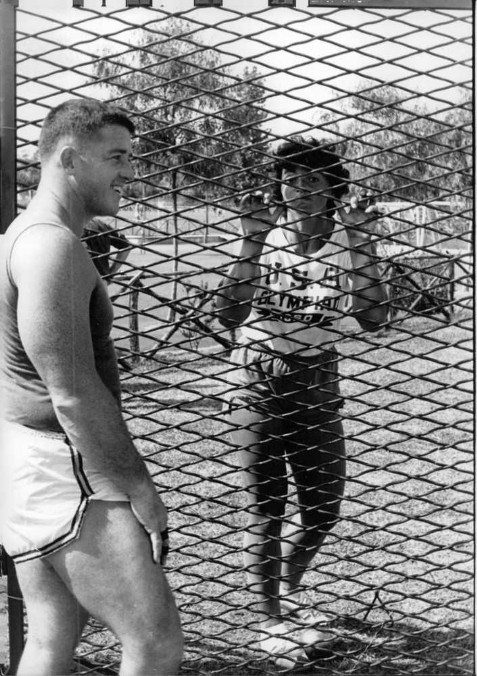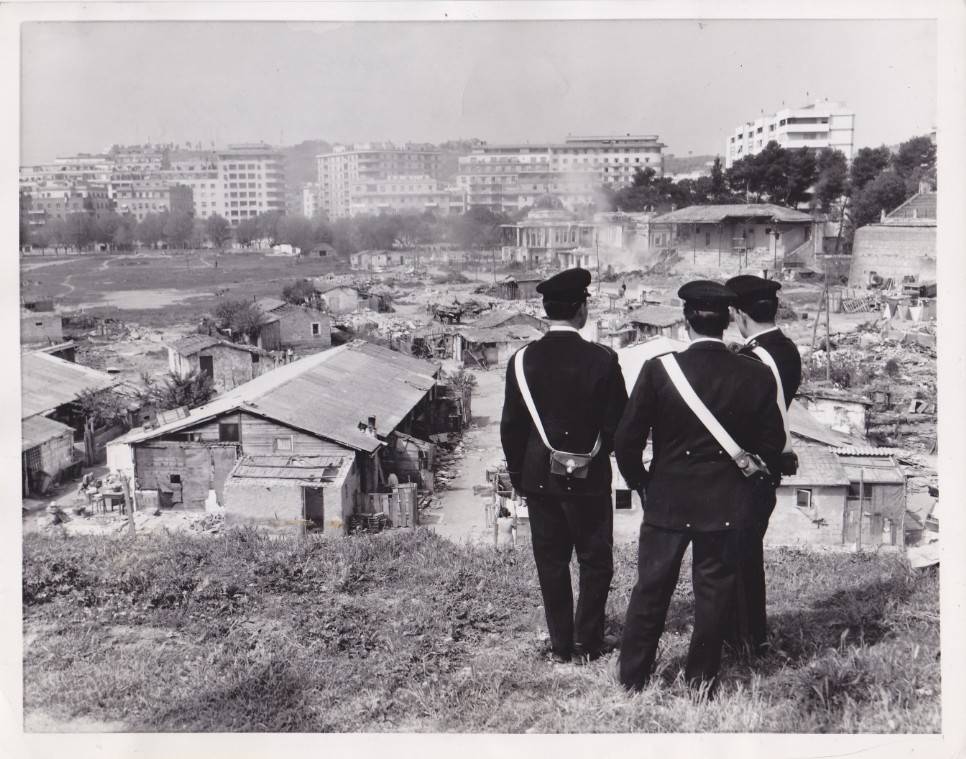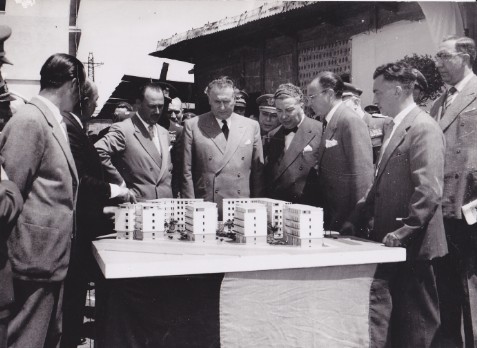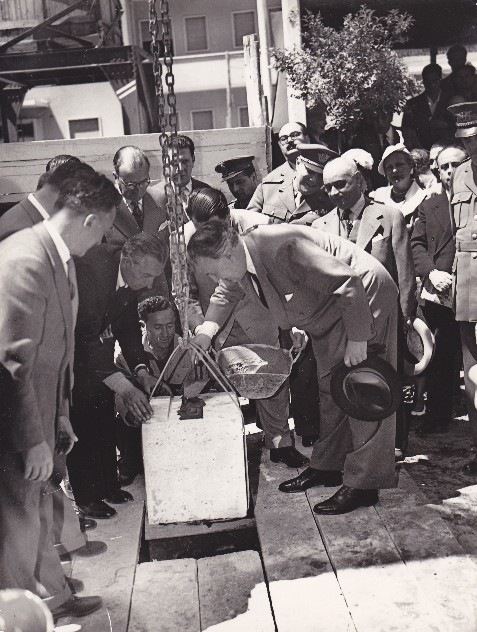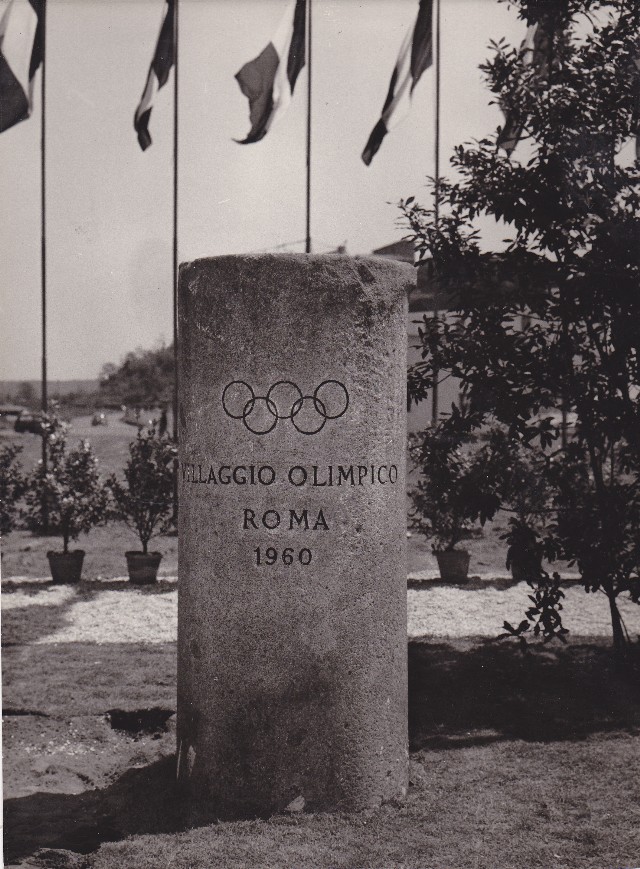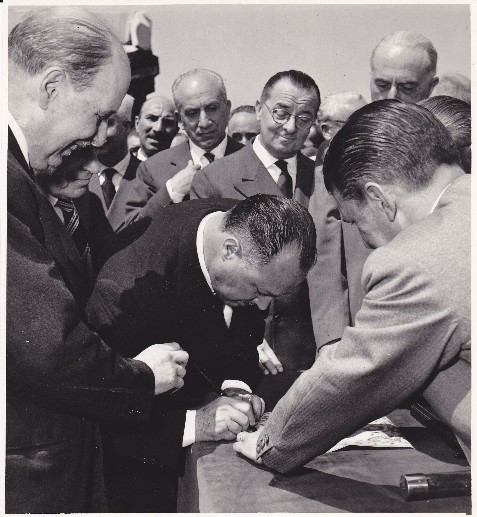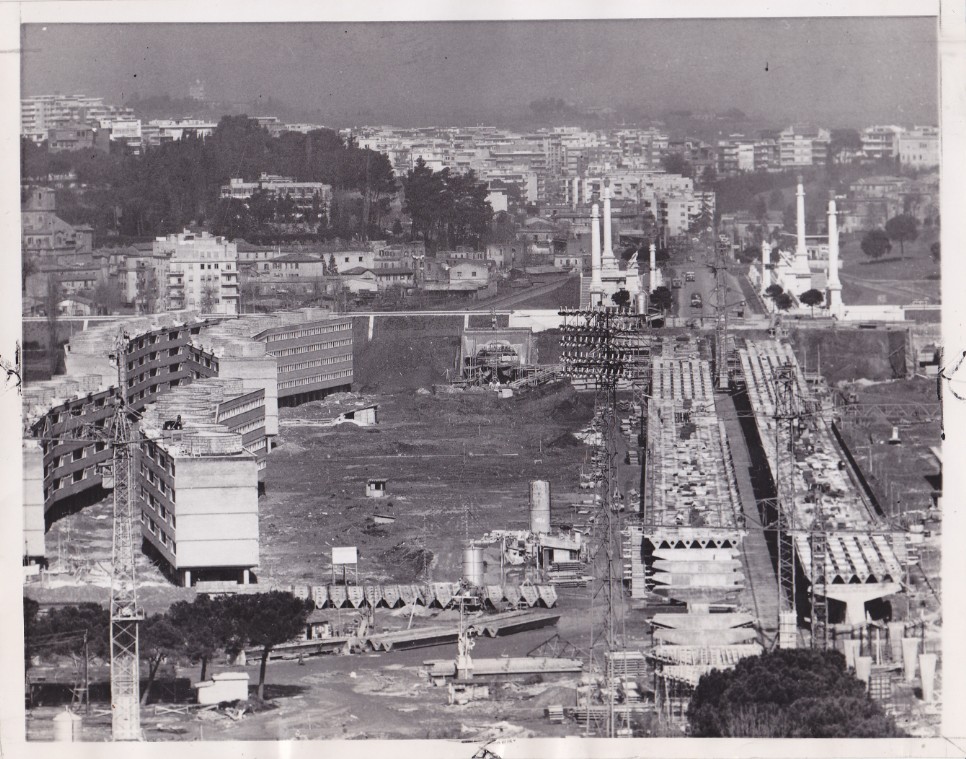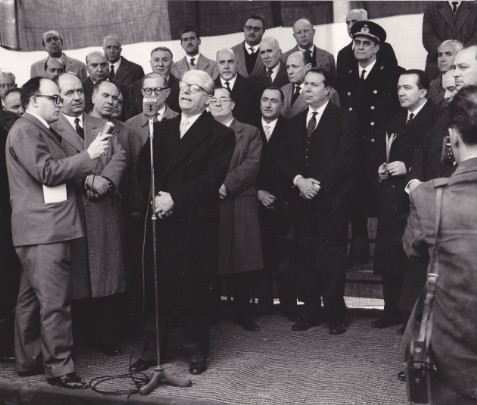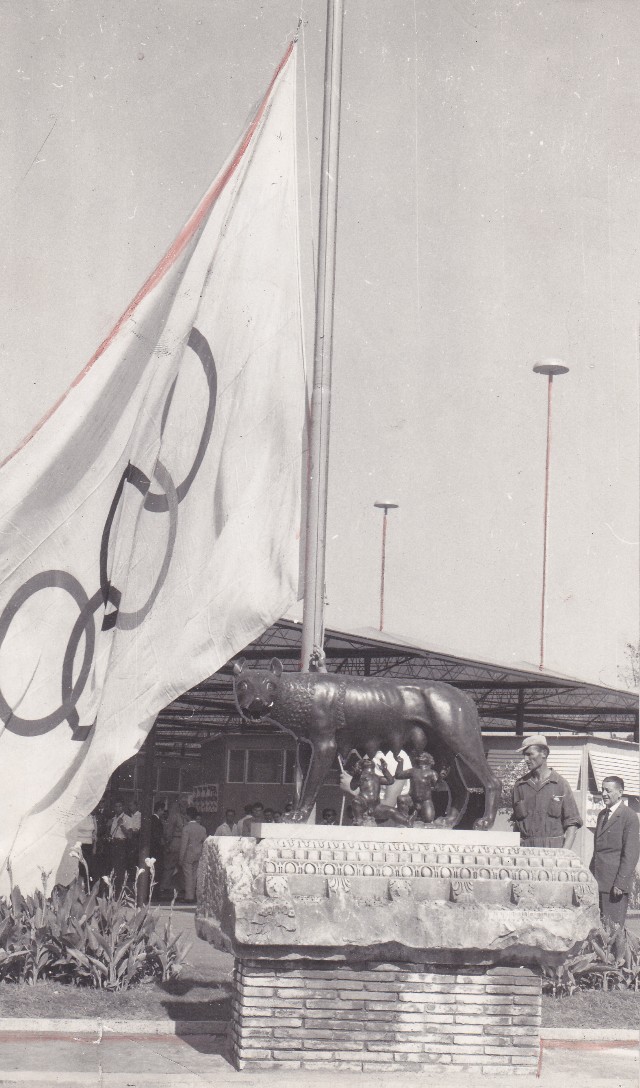Villaggio Olimpico
Olympic Village
Nell'organizzazione di una Olimpiade, l'approntamento del Villaggio Olimpico costituisce indubbiamente un'opera quanto mai onerosa sotto ogni profilo. Per la realizzazione del Villaggio Olimpico di Roma fu prescelta l'area dell'ex Campo Parioli per la sua felice posizione, che si estende dalle pendici di Villa Glori fino al nuovo Stadio Flaminio.
The Olympic Village is being built in the district known as "Campo Parioli", between the via Flaminia, Villa Glori, Acqua Acetosa and the Flaminio Stadium. This area was chosen as being the one which best fitted the varied requirements of location, practicability and accessibility to the various sports venues and trainiing fields. Traffic is greatly facilitated by the new bridge across the Tiber, the construction of which was decided upon in order to form a link whit the Foro Italico.
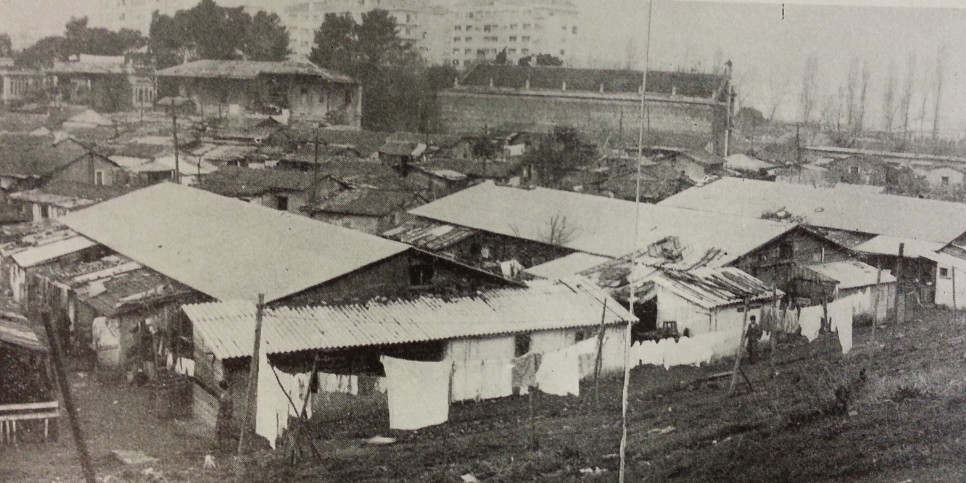
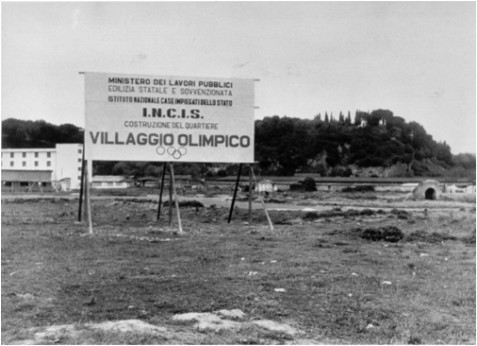
La progettazione del Villaggio fu effettuata da un gruppo di 5 importanti architetti dell'epoca: Cafiero, Libera, Luccichenti, Monaco e Moretti che concepirono un complesso capace di contemperare sia le esigenze estetiche che quelle funzionali di Villaggio Olimpico e di quartiere cittadino autosufficiente. Il Villaggio, la cui costruzione fu affidata all'INCIS, comprendeva 1348 alloggi per un totale di 7789 vani ai quali vanno aggiunti gli edifici al servizio del quartiere (scuola, chiesa, cinema, ufficio postale, mercato e negozi).
The design of the village was carried out by a group of five leading architects of the time: Cafiero, Free, Luccichenti, Monaco and Moretti who conceived an entity capable of balancing both the aesthetic and functional needs of the Olympic Village and the city self-sufficient neighborhood. The village, whose construction was entrusted to all'INCIS, 1348 includes accommodation for a total of 7789 rooms which must be added to the buildings of the neighborhood services (school, church, cinema, post office, market and shops).
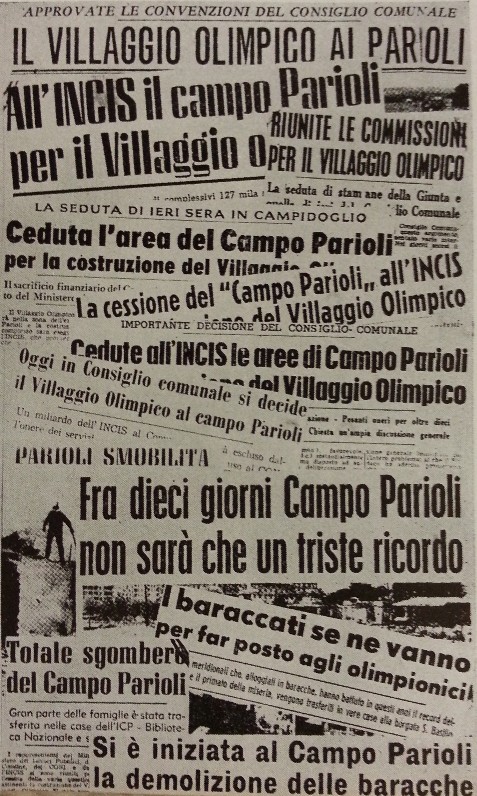
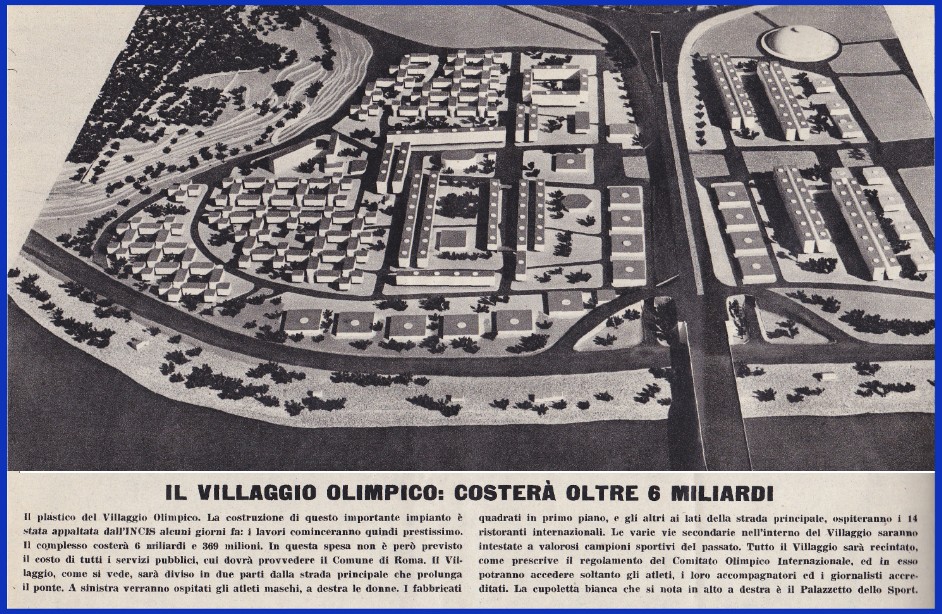
A newspaper article about the costs of construction of the Olympic Village
The architects show to the Minister Togni the plastic of the Village
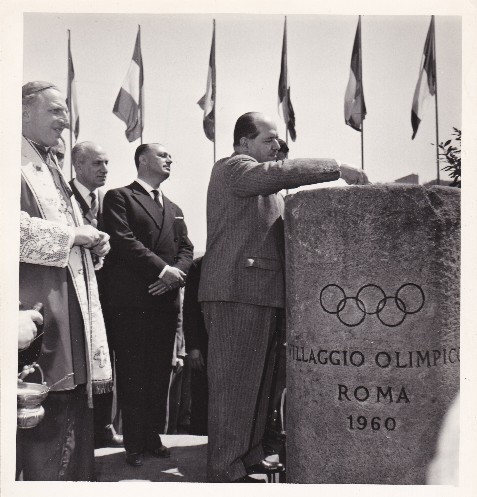



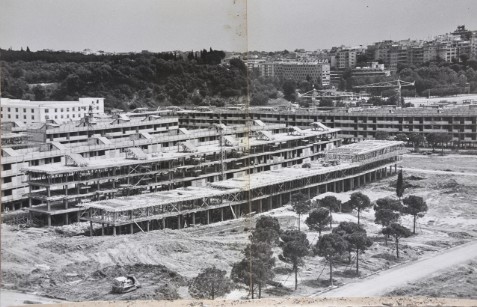
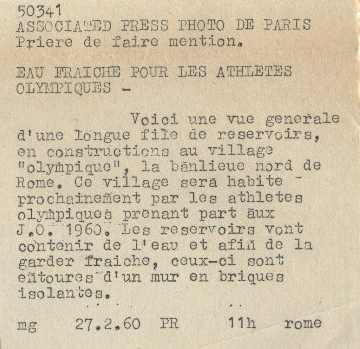
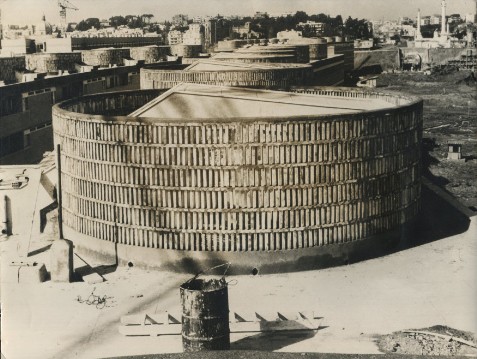
Photos of the tank for water reserve in the Olympic Village
